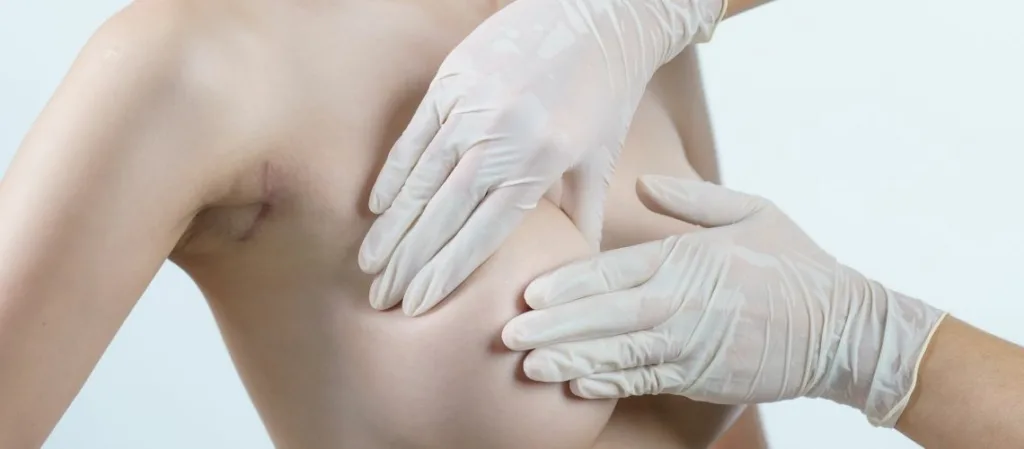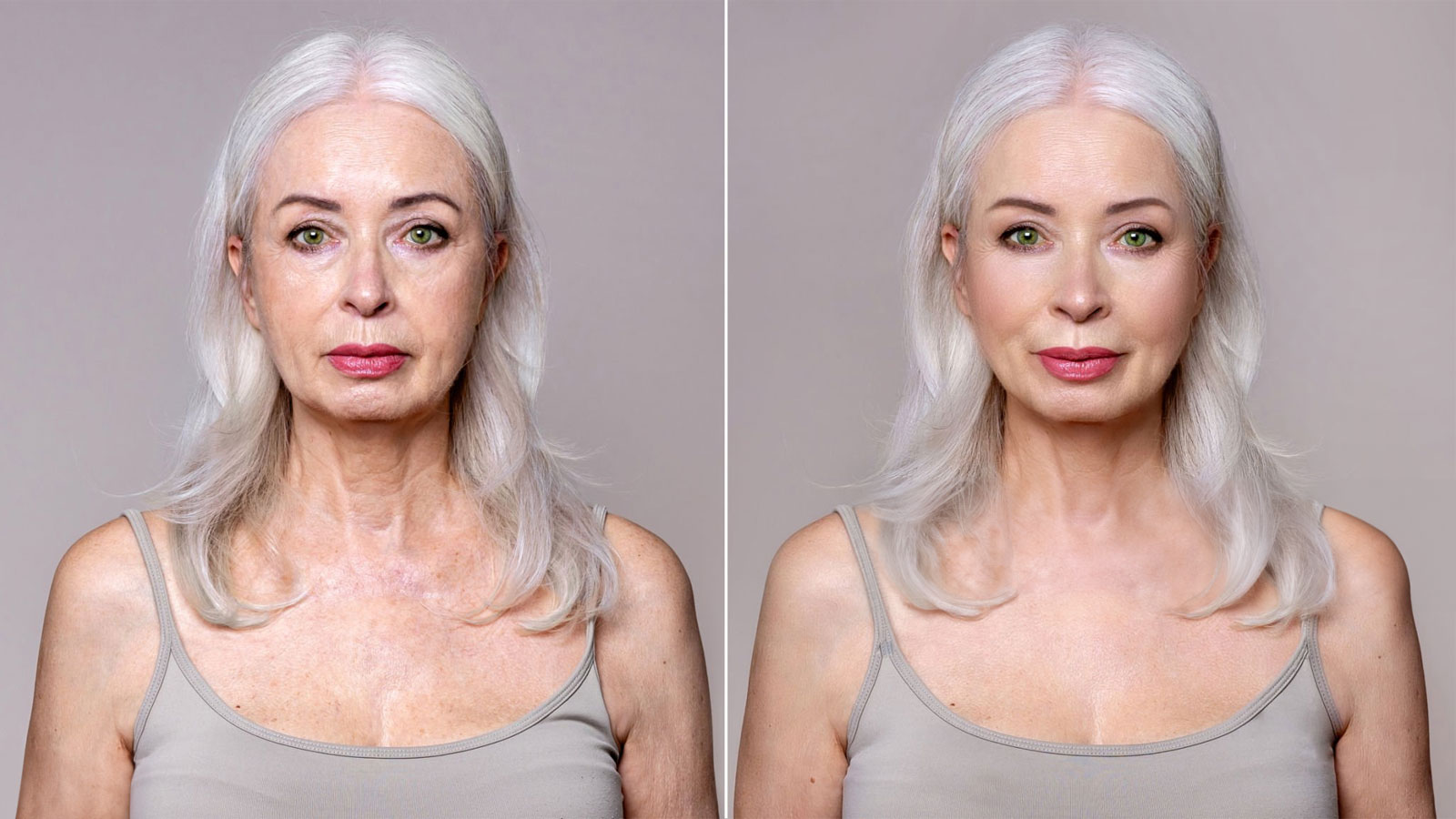The recovery process after breast aesthetics involves a structured healing period with rest, controlled movement, and adherence to medical advice. Initial swelling and discomfort gradually decrease within the first weeks.
Postoperative care after breast aesthetics includes wearing special supportive bras, managing pain, and avoiding pressure on the chest. These measures ensure proper healing and maintain the surgical results.
Scar healing in breast surgery requires careful follow-up. Sun protection, topical treatments, and surgeon-recommended methods are important for minimizing visible marks over time.
Long-term results after breast aesthetics become apparent once tissues fully adapt. A healthy lifestyle, stable weight, and regular follow-up visits are vital to sustaining the desired cosmetic outcome.
How Does the Post-Breast-Aesthetic Surgery Recovery Process Work and What Should We Be Prepared For?
Whether the breast aesthetic surgery is augmentation, reduction, lift or reconstruction, it requires your body to enter a recovery phase. This period covers both your physical recovery and getting used to your new look. Paying careful attention to this healing process is just as crucial as the surgery itself for a satisfying outcome. Following your doctor’s advice, giving proper care, and being patient will help you get through it more comfortably. There are quite a few points to watch during this process.
How Long Does Complete Recovery Take After Surgery?
Regaining basic body functions and adapting to daily life generally takes 6 to 8 weeks. However, that does not mean recovery is finished. For the surgery’s true aesthetic results to set—meaning swelling and edema fully subside, implants (if used) settle into place, breasts take their final shape, and incision lines fade—much more time is needed. This process typically spans from 6 months to 1 year, sometimes even longer. So even if you feel better quickly in the early weeks, you will need some patience to see the final outcome.
What Are the First Days and Weeks After Surgery Like?
In the first hours after surgery it is normal to feel some grogginess and fatigue from the anesthesia, and you may have pain. Once you are stabilized you can usually go home after a few hours of observation, but having someone to help you during the first 24 hours is important. Your breasts will be bandaged and you will need to wear a special surgical bra.
The first week is perhaps the most uncomfortable part of recovery. Pain is more pronounced in the first 3-5 days but is managed with painkillers prescribed by your doctor. Swelling and bruising are most intense at this stage but decline over time. While rest is crucial, short, slow walks around the house are recommended to increase blood flow. Avoid heavy lifting and sudden movements at all costs.
What Should Be Expected in the Second Month of Recovery?
From the second to the fourth week, pain and general discomfort diminish greatly. Swelling and bruising noticeably lessen. You may feel more energetic and return more easily to light housework and short walks. Still avoid any activities that strain the upper body or involve lifting more than a few kilograms (generally 2-5 kg).
From the fourth to the eighth week (about 1-2 months), most people largely return to normal routines. With your doctor’s approval you can begin more vigorous cardio exercises such as running and lower-body workouts. Breasts start to look more natural and soften. Wearing a supportive bra usually continues.
How to Handle Pain After Surgery?
Postoperative pain is expected and is most intense during the first few days. The degree of pain varies by person and procedure type. The first 3-5 days are usually the most painful, yet this discomfort is generally manageable and decreases over time. Pain after breast reduction may last 2-3 weeks. If implants are placed under the muscle, additional tightness may result from muscle tension.
Your doctor typically prescribes pain medication for the first days; as pain decreases you can switch to over-the-counter drugs. Sometimes small pumps delivering anesthetic or long-acting local anesthetic injections are used to reduce pain, and muscle relaxants may be given for muscle tightness. The key is to take medication regularly as your doctor directs before pain becomes severe. Inform your doctor immediately if unexpected pain increases occur.
What Needs Attention After Breast Aesthetic Surgery? When Are Certain Movements Allowed?
It is very important to increase activity levels gradually during recovery; this lowers complication risk and supports healing. Rest is essential in the first few days. Avoid lifting your arms over your head, yet take short home walks to promote circulation. When resting, keep your back slightly elevated with pillows (semi-sitting) to reduce swelling.
During the first 1-2 weeks you can perform light daily tasks but must not lift anything heavier than 2-5 kg. Avoid impact activities like running or jumping. Sleeping on your back is recommended in the first weeks. Side sleeping is generally allowed after week 2; lying face-down much later (6-8 weeks or as advised by your doctor).
When Can You Return to Work?
When you can return depends on the physical demands of your job and the type of surgery. For desk work or other non-strenuous roles, many people return after about one week. Jobs requiring more physical effort may need at least 3 weeks; after larger operations like breast reconstruction you might need 6-8 weeks or more. After breast reduction, returning to work usually takes 2-3 weeks. Always get your doctor’s approval before going back.
When Can You Start Exercising Again After Surgery?
Return to sports should be gradual.
- First 1-2 Weeks: Only gentle walking.
- Weeks 2-4: Walking duration can increase. With doctor approval, add lower-body exercises and low-intensity cardio such as stationary cycling.
- Weeks 4-6: You may start more vigorous walking, light jogging, and lower-body weight training; very light upper-body exercises (such as arm curls) that do not strain chest muscles may be tried. Still avoid chest-focused moves like push-ups or bench presses.
- After 6-8 Weeks: Usually, with doctor approval, you may return to lifting weights and all other sports routines. Start new activities cautiously. Wearing a supportive sports bra is important during exercise.
When Is Sexual Activity Allowed?
Always discuss this with your doctor. In general you may be advised to wait anywhere from 1-2 weeks to 4-6 weeks post-surgery. During this time avoid any pressure or trauma to the breasts. Listen to your body and start only when you feel comfortable.
How Should Incision Care Be Handled?
Proper incision care is critical to prevent infection and achieve optimal scar healing. The most important thing is to follow your surgeon’s specific directions. Generally, keep the sites clean and dry. Once permitted you may wash them gently and pat dry. Your doctor may prescribe an antibiotic ointment. Sutures may be absorbable or require removal after 1-2 weeks. Watch for signs of infection— increasing redness, swelling, warmth, pain, or discharge— and inform your doctor immediately.
Is It Normal to Feel Itchy After Surgery, and What Should Be Done?
Yes—itching at incision sites during healing is quite common. It is part of recovery. However, no matter how itchy, avoid scratching the incisions; scratching can raise infection risk and delay healing. Ask your surgeon about methods to ease itching safely.
When Is Bathing Allowed After Surgery?
Your surgeon will decide when you can take your first shower. This typically occurs after drains or initial bandages are removed (a few days to a week post-surgery). Full immersion in a tub, hot tub, or pool is usually avoided for at least 4-8 weeks due to infection risk. Your doctor will provide the exact timing.
When Do Swelling and Bruising Subside?
Postoperative swelling (edema) and bruising are expected. They peak in the first week and then gradually lessen over the following weeks and months. Complete resolution and tissue settling can take several months. Cold compresses (with doctor approval), keeping the upper body elevated, and wearing the surgical bra regularly help swelling diminish more quickly.
Why Are Drains Used and How Are They Cared For?
After some surgeries, thin tubes called drains may be placed temporarily to prevent fluid (blood or serum) collection. Excess fluid can raise infection risk and slow healing. Drains are not needed in every surgery; it depends on your doctor’s preference and the procedure. If you have drains you will be instructed on how to empty and keep them clean. They are usually removed by your surgeon after the fluid volume decreases—in a few days or within 1-2 weeks.
What Should Nutrition Be Like During Recovery?
Healthy eating supports your body’s repair. A balanced diet rich in protein (chicken, fish, eggs, legumes), vitamins (especially vitamin C), and minerals is important. Drinking plenty of water helps reduce edema and promotes overall recovery. Avoid processed foods and excessive salt and sugar. Always follow any special dietary advice your doctor provides.
When Will the Final Result of the Surgery Be Visible?
As noted earlier, while recovery progresses quickly in the first weeks, it takes time for your breasts to reach their final shape, tissues to settle fully, and scars to mature. This process generally completes between 6 months and 1 year, sometimes longer. Patience and regular follow-up are essential.
What Can Accelerate the Healing Process?
Although recovery is personal, some general guidelines apply. Above all, strictly follow your surgeon’s instructions. Rest adequately but avoid complete inactivity. Adopt healthy eating habits and stay well-hydrated. Quitting smoking accelerates healing. Care for incisions properly and be alert to infection signs. Avoid heavy lifting and strenuous sports until cleared by your doctor. And remember: patience is key. Give your body the time it needs to heal.

Op. Dr. Erman Ak is an internationally experienced specialist known for facial, breast, and body contouring surgeries in the field of aesthetic surgery. With his natural result–oriented surgical philosophy, modern techniques, and artistic vision, he is among the leading names in aesthetic surgery in Türkiye. A graduate of Hacettepe University Faculty of Medicine, Dr. Ak completed his residency at the Istanbul University Çapa Faculty of Medicine, Department of Plastic, Reconstructive and Aesthetic Surgery.
During his training, he received advanced microsurgery education from Prof. Dr. Fu Chan Wei at the Taiwan Chang Gung Memorial Hospital and was awarded the European Aesthetic Plastic Surgery Qualification by the European Board of Plastic Surgery (EBOPRAS). He also conducted advanced studies on facial and breast aesthetics as an ISAPS fellow at the Villa Bella Clinic (Italy) with Prof. Dr. Giovanni and Chiara Botti.
Op. Dr. Erman Ak approaches aesthetic surgery as a personalized art, tailoring each patient’s treatment according to facial proportions, skin structure, and natural aesthetic harmony. His expertise includes deep-plane face and neck lift, lip lift, buccal fat removal (bichectomy), breast augmentation and lifting, abdominoplasty, liposuction, BBL, and mommy makeover. He currently provides safe, natural, and holistic aesthetic treatments using modern techniques in his private clinic in Istanbul.









